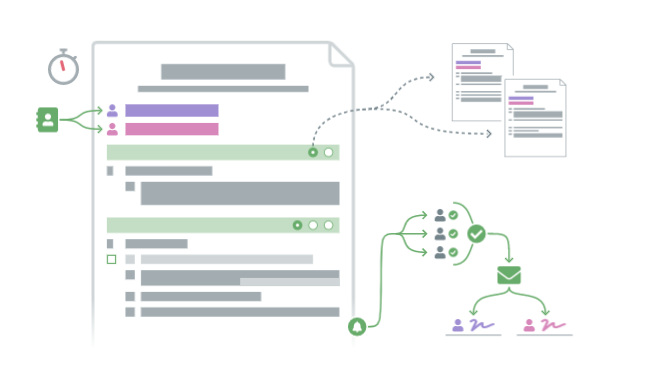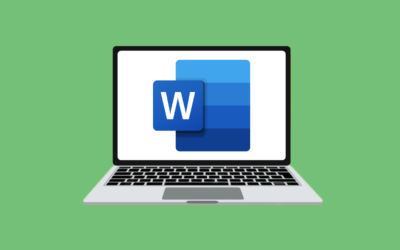What is Automated Document Drafting, and Why Should You Care?
What is Automated Document Drafting, and Why Should You Care?
Odds are that if you work in an office, at some point you will hear or read something relating to Automated Document Drafting and Assembly. It may be an online ad, a new initiative from your HR or Legal Department, or your boss may have tasked you to find a robust, dynamic, smart, incredible document automation solution that will promote lean efficiency, boost productivity, add value, and help the business grow… Of course, your boss is always asking you to do those things, document automation or no.
Now, when most people hear the words automated document drafting, they might imagine documents so clever that they draft themselves. While we may not be quite there yet, a good document automation tool can quickly produce a document customized to your particular use in just a few minutes.

Automated Drafting solutions usually use Automated Templates which are exactly that, standard templates automated to quickly draft documents.
A good automated template can:
Dynamically add or remove text, clauses, or entire pages from a document dependent on entered information.
For instance, if answering a question on marriage status, choosing the married option will automatically generate additional questions about your spouse and marriage; or if completing a commercial contract, and you choose to pay in installments rather than a lump sum, an additional “Installment Plan” document may appear.
Auto populate information across all relevant sections of a document after entered only once.
For example, in a lease agreement, a user will only have to enter a Party’s Name, or the fees once, and the information will be listed correctly throughout the document.
Provide Template Version Control.
Let’s say, a contract may have terms and conditions that are OK for the previous year, but after a regulation change, the old contract terms are no longer permitted. An automated document drafting solution not only makes sure that users only use the current version of a template, but will notify the user who already started on the older template, and automatically update the old template with the new terms.
Promote consistent negotiated terms with a Clause Library. Lawyers like to negotiate, and salespeople like to make deals.
Companies try to standardize how much leeway employees have in varying from the standard, but it’s difficult to ensure consistency. A clause library is the most common approach to this issue. An automated drafting solution however, can automatically place these approved terms into a document.
For example, a subscription license may have a different fee based on a 1-, 2-, or 3-year term. An automated document solution can automatically include the correct conditions based on the length of the term so there is no longer a need to worry about “rogue” contracts.
Automated Document Drafting solutions apply to just about any business use case. HR, Legal, Finance, Procurement, and Sales teams, find it helpful to automate time intensive tasks. For more information about how different teams apply Document Automation, Visit Legito Academy.
Odds are that if you work in an office, at some point you will hear or read something relating to Automated Document Drafting and Assembly. It may be an online ad, a new initiative from your HR or Legal Department, or your boss may have tasked you to find a robust, dynamic, smart, incredible document automation solution that will promote lean efficiency, boost productivity, add value, and help the business grow… Of course, your boss is always asking you to do those things, document automation or no.
Now, when most people hear the words automated document drafting, they might imagine documents so clever that they draft themselves. While we may not be quite there yet, a good document automation tool can quickly produce a document customized to your particular use in just a few minutes.

Automated Drafting solutions usually use Automated Templates which are exactly that, standard templates automated to quickly draft documents.
A good automated template can:
Dynamically add or remove text, clauses, or entire pages from a document dependent on entered information.
For instance, if answering a question on marriage status, choosing the married option will automatically generate additional questions about your spouse and marriage; or if completing a commercial contract, and you choose to pay in installments rather than a lump sum, an additional “Installment Plan” document may appear.
Auto populate information across all relevant sections of a document after entered only once.
For example, in a lease agreement, a user will only have to enter a Party’s Name, or the fees once, and the information will be listed correctly throughout the document.
Provide Template Version Control.
Let’s say, a contract may have terms and conditions that are OK for the previous year, but after a regulation change, the old contract terms are no longer permitted. An automated document drafting solution not only makes sure that users only use the current version of a template, but will notify the user who already started on the older template, and automatically update the old template with the new terms.
Promote consistent negotiated terms with a Clause Library. Lawyers like to negotiate, and salespeople like to make deals.
Companies try to standardize how much leeway employees have in varying from the standard, but it’s difficult to ensure consistency. A clause library is the most common approach to this issue. An automated drafting solution however, can automatically place these approved terms into a document.
For example, a subscription license may have a different fee based on a 1-, 2-, or 3-year term. An automated document solution can automatically include the correct conditions based on the length of the term so there is no longer a need to worry about “rogue” contracts.
Automated Document Drafting solutions apply to just about any business use case. HR, Legal, Finance, Procurement, and Sales teams, find it helpful to automate time intensive tasks. For more information about how different teams apply Document Automation, Visit Legito Academy.
More Weekly Articles



















